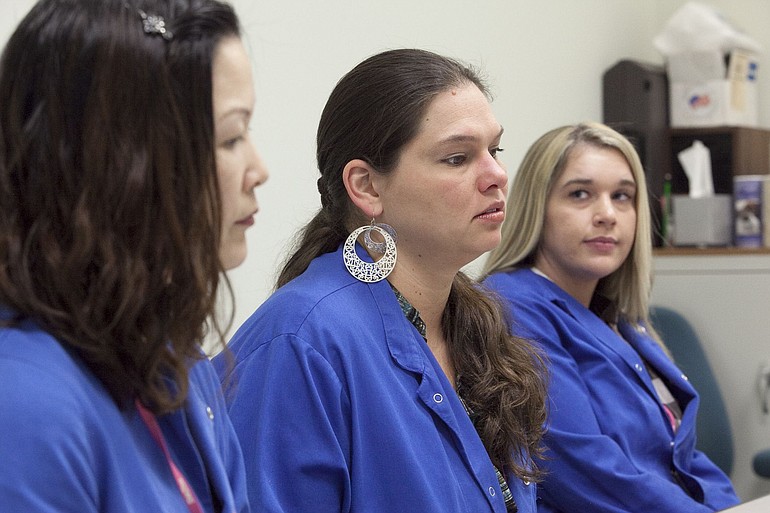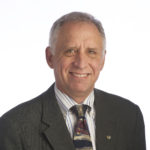The walls started swaying just before the visitors from SEH America were to make their presentation.
It was Friday, March 11, and the earthquake that triggered a continuing string of disasters in Japan was under way in SEH’s sister plant in Nagano.
“The building was swaying from side to side,” said Meadow Nelson, one of five SEH America employees who was in the second-floor conference room of a three-story building. But even as people headed to the windows for a view, nobody panicked. Sanae Kunishima, a Japanese-American member of the delegation, offered reassurance based on her knowledge of Japanese earthquake preparedness: as long as the walls are swaying, and not the roof, everything should be OK. The rattling continued for several minutes, though it seemed like hours.
SEH America officials suggest that contributions to assist Japan in recovery efforts be made through the Japan-America Society of Oregon.
“We didn’t know how bad it was,” said Jessica Walker, another SEH America employee, who was on her first trip outside the United States.
The three women recounted the story of their eventful visit to Japan after returning to the U.S., and to their jobs at SEH America’s silicon wafer plant in east Vancouver. The women and co-workers Erich Mounce and Priscila Agpalza were hundreds of miles from the earthquake’s epicenter, and suffered only minor inconveniences from the devastating disaster. Still, they had to deal with fears of their families, aftershocks that woke them from their sleep, and worries about possible exposure to radiation from the earthquake-damaged nuclear power plant. They are haunted by images of suffering displayed on television and the Internet, and they recall the many acts of kindness they received from Japanese people even in the midst of a national trauma.
“The people of Japan are amazing,” Nelson said. “They were more concerned about us and making sure we were comfortable. They really didn’t show any concern for themselves.”
Nagano plant workers were gracious hosts, even the night of the quake. “I’m sure they wanted to go home to their families but they took us out,” Walker said. “It kind of took our minds off of things being out with them.”
When the earthquake rattled the conference room SEH workers headed to a television-equipped room to catch the news — cellphones aren’t allowed at the plant, so they could not get updates by phone. Employees then checked for damage at their work stations in the plant. They returned and the conference resumed after just a one-hour delay. The Vancouver-based SEH America employees, members of an SEH quality circle whose ideas for improvement had earned them the trip to Japan, made their 15-minute presentation about quality improvements at the U.S. plant. Walker said she felt lightheaded; Nelson said she experienced vertigo. The audience seemed to pay attention.
“It’s a very respectful culture,” Nelson said. “If they weren’t listening, they pretended that they were.”
Back in the hotel room that evening, television news reports had shifted to fears of a tsunami, and television video showed large swirls in the ocean. The broadcast was in Japanese, so Kunishima interpreted. Only then, Walker said, did they realize the magnitude of the event.
“I was stunned,” Walker said. “We felt very fortunate to be where we were.”
Making contact
Cellphone service had disappeared not long after the quake, but the U.S. workers made contact with bosses and family members by email and on Facebook. The news being reported in America, it seemed, was much more dramatic than what they were seeing in Japan.
“The American news kind of awfulizes it,” Nelson said. But, Walker reflected, it’s likely that the Japanese media was downplaying the magnitude of the disaster to avert panic. They noticed that videos were being blocked on news websites, something they couldn’t explain, but they were able to view the videos on smartphones.
The group delayed its trip to Tokyo from Sunday to Monday, uncertain about operation of the bullet train and worried about exposure to radiation from the failed nuclear plant to the north. Among the lingering images from the trip: Outside the Nagano City train station, Kunishima saw two families with boxes and handmade signs, collecting funds to send to victims in the north.
Arriving in Tokyo, they found quiet streets even in the city’s popular Ginza entertainment district, dimly lit department stores, and restrictions on bottled water purchases.
“People weren’t panic buying yet but we did see empty shelves in convenience stores,” Kunishima said. “It seemed like a lot of the Tokyo people went on with their normal work if they could.”
Normal was hardly possible, no matter how hard everyone tried. Their hotel provided masks as a protection against radiation, and the SEH employees didn’t know what it all meant to them.
“My mother was convinced I was dying,” Nelson said. Her doctor’s office gave her reassurances about radiation exposure when she returned home, which eased all of their minds.
By Tuesday, Nelson and Walker were ready to leave even though they’d had to scrap their planned trip to Disneyland. They were joined by Mounce and Agpalza, while Kunishima stayed another day. Back home, Japan’s continuing trauma remains intensely personal.
“When I got home the reality sank in,” Nelson said. “I sat down to watch the news, and I just bawled.”
“The people are so beautiful and they took such great care of us,” she said. “And now they are still there dealing with the aftermath.”




